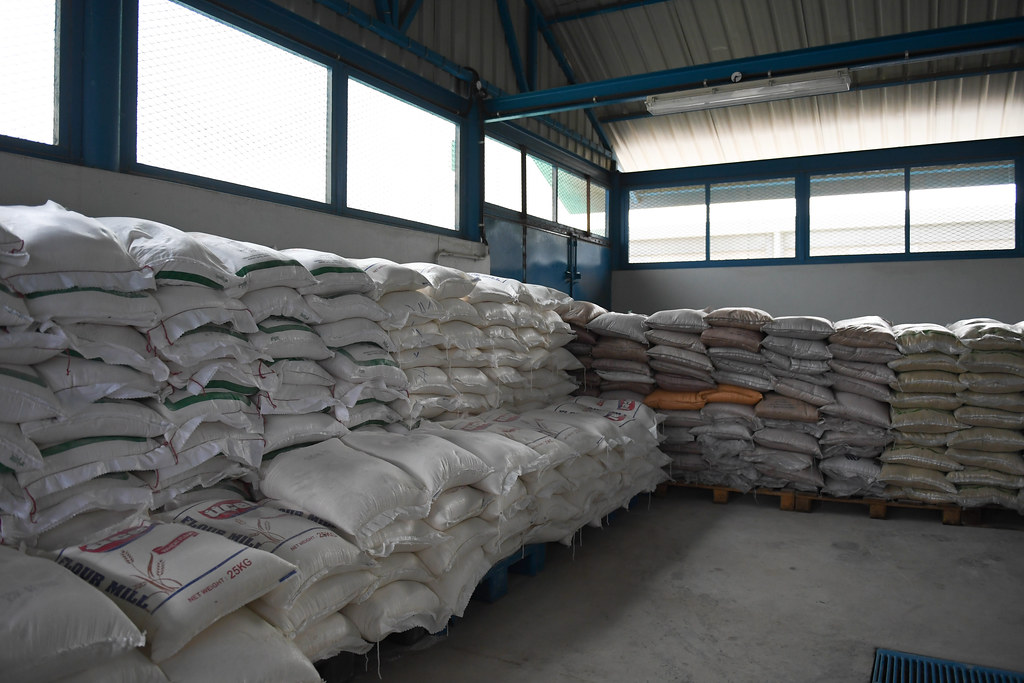Rice contains 206 calories per cup plus it barely takes up any space and is virtually non-perishable. If you aren’t learning how to store rice long term, you’re making a tremendous mistake.
Storing a surplus of non-perishable food is important for all preppers and when it comes to deciding what to store, rice should be something towards the top of your list. It’s great to have canned items, veggies, and other types of canned produce but rice packs a lot of calories into a compact space and offers a variety of preparation options too based on your survival scenario.
In addition to producing your own food, let’s talk about how to pad your emergency food stockpile with plenty of rice.
What Makes Rice a Great Choice For Long Term Food Storage
Keep in mind, we will be talking about storing uncooked rice. In reality, cooked rice has a high moisture content that makes it an easy target for bacteria. It can last for a few days in a refrigerator but not more than a day when left at room temperature.
First, let’s take a quick look at the main reasons that make rice a great choice for long term storage.
- In terms of carb content, rice is as good as other carb-rich foods like potatoes, white bread, and pasta. Apart from complex carbohydrates, it also contains multiple nutrients like Vitamin E, thiamin, niacin, zinc, and phosphorus. In short, it’s a great wholesome food and a quick source of energy.
- Rice is one of the most affordable food items you can buy. In fact, a 50-pound bag of white rice can deliver around 30,000 calories! That way it helps to pack more calories in your food intake in the most economical way. In addition, you can save on the costlier protein-rich food items by combining them with rice.
- When it comes to saving space and freeing your emergency storage area for more options, rice is an excellent choice. Since they swell once boiled, rice grains are one of the most calorie-dense food items. For storing in the small storage space in your bug-out location, rice bags are ideal.
- Rice is also considered an allergen-free food item. So it can be safely consumed by anyone without having to worry about food allergies.
- If you’re looking for a versatile food that goes with every dish, rice has no competition. Also, you can make a wide variety of dishes with rice with little effort.
- Lastly, it’s the excellent storage life that makes rice such a great survival food. White rice can easily be stored for more than five years.
The Best Rice Variety for Long Term Storage
Before you start buying rice, you need to learn about the main varieties of rice available. In reality, not all the varieties are equally good when it comes to storing rice long term.
White Rice
This is the easiest variety for long term rice storage. It’s often said when stored correctly, white rice can last for 30 years! The name white rice comes from the milling process that removes the hull, bran layers, and the germ from the grain. Obviously, that reduces the overall nutritional value of white rice.
Brown Rice
Brown rice is a healthier option as it contains the bran layer and the germ. That’s why it’s often considered a calorie-rich superfood. However, it can only be stored for around six months before the higher oil content turns it unusable. So we wouldn’t mark brown rice storage as the best choice for preppers.
Instant or Pre-cooked Rice
This is the type of rice that has been cooked and then dehydrated. It takes less time to prepare which can help you to conserve fuel during an emergency. Unfortunately, the shelf life of this form is around one year. So it’s best if you use it as a small part of your emergency food stock.
Parboiled Rice
This is considered one of the best forms of rice for long term storage. Parboiled rice is made to go through the three stages of soaking, steaming, and drying before the husk is removed. This makes it nutritionally richer than white rice.
The process of parboiling also inactivates the enzymes that speed up the breakdown of rice. That improves the overall shelf life by a lot. The result is a storage life that’s as good as white rice.
How to Store Rice Long Term: The Basics
The first thing you need to think of is the quantity of rice you will be storing and the place of storage. Once these points are settled, there are a few steps and precautions you need to take for rice storage.
Choosing the Right Container
Choosing the right container is important to prevent the rice from exposure to the atmosphere and for protecting them from pests and insects.
One of the best options is to use normal buckets made from food-grade plastic. Not only do they protect the rice from insects, but they are also waterproof. So the rice is safe even if rainwater leaks into your storage space.
We suggest you use plastic buckets with measurement marks. This will help you to estimate the volume you have stored and also the amount you have left.
That said, it isn’t necessary to use special buckets with airtight seals. These airtight containers may cause the rice to sweat and ultimately lead to moisture generation and mold formation.
Another great way to store rice long term is to use mylar bags. They keep the rice protected from elements without allowing the generation of internal moisture. Make sure you choose mylar bags of the best quality so that no tears or holes are formed in the long run.
If you are troubled by rodents, choosing metal buckets or glass jars with a lid is a good option. While rodents can’t chew through metal, this is a more expensive option than normal buckets.
Prevention of Mold
Molds are one of the biggest problems when it comes to rice storage. Two major factors that lead to the formation of molds are warmth and humidity.
While small quantities of rice can be stored in the freezer, your bug-out location won’t contain a commercial freezer for storing large volumes. So it’s best if you store the rice in a cool and dry place.
The best temperature for storing rice is at 40° Fahrenheit or slightly below it. It can be stored at higher temperatures at around 70° Fahrenheit, but you need to reduce the moisture levels to prevent spoiling.
While underground locations are cooler they aren’t dry in most cases. If your storage location isn’t a dry place or is located near a water source, you can think about investing in a dehumidifier.
The only problem?
While a dehumidifier is a great way to control moisture levels, the device will need a power source to function. So during a disaster scenario when the power is out, you can’t expect to use it.
The good news is, there are a few other options you can use.
One way is to use oxygen absorbers to remove the oxygen from the rice storage containers. These chemical compounds are non-toxic and a few drops of them can keep the plastic container or mylar bag free from oxygen. They will make it difficult for bugs to enter the container and lay eggs.
Using a desiccant like silica gel is also effective in controlling the humidity inside the storage containers.
Preventing Bugs
Your rice stockpile is always in danger from a variety of creatures. So safeguarding your stock from these threats is a must.
The first type of threat is from rodents like rats, mice, squirrels, ferrets, or raccoons. With their sharp teeth, they can easily chew through weak materials. Not only will they consume your stock, but will also spoil it with their excrement.
Most importantly, this adds to spoilage, which should be minimized during emergency survival.
The first step is to stop the entry of these creatures into your storage space. Traps and barriers can be effective for that purpose. Biological protection through pets like cats or dogs is also another option.
The other option is to choose hard metal containers for long term rice storage instead of plastic food-grade buckets. This will prevent rodents from destroying it.
The other threat is from bugs and insects. These unseen creatures can enter the rice stock and lay their eggs. After all, you don’t want to find beetles crawling in the white basmati rice once you open up the container.
In reality, the eggs can be there in the rice even before you purchase it. One way to remove it is to freeze the rice before long term storage. The eggs will not be able to survive in extremely cold temperatures.
Next, use sealed containers for keeping insects away. You can also try to store rice in small containers instead of one or two large ones. That way, the bugs won’t be able to get to your entire stock at one time.
Additionally, there are a few simple steps you can take to prevent the growth of bugs in rice.
- Add a few neem leaves and 3 to 4 dry chilies in the rice storage container. If you don’t find neem leaves, bay leaves can also be used. This will prevent the bugs from developing and also act against mold formation.
- Keep a few unpeeled garlic pods in the storage container to prevent bugs. Shuffle till they get mixed with the rice. Change the pods once they dry out after some months
- It may happen rice has already been infected with bugs but you can’t afford to throw away your limited stocks during an emergency. Washing the rice thoroughly before cooking it is a good idea. Also, you can expose the rice to sunlight for a few hours. Most bugs prefer dark and humid spots and will move out when exposed to sunlight. Ideally, you should do this at regular intervals. However, make sure the rice hasn’t changed color or developed an unpleasant odor.
How Much Rice Should You Store?
Now that you know how rice should be stored, it’s time to figure out the amount to be stored. In fact, that will help you to make the right arrangements for proper storage.
Keep in mind rice isn’t the only food you need to store. So the storage volume will depend on the other food groups present in your stock. At the same time, you need to save space for other important items necessary for survival. So when you store food, space availability is an important factor.
On average, a pound of white rice will yield around 592 calories when cooked. Roughly, there are 5 to 6 cups of rice in one pound. As a rule of thumb, we can consider around 125 to 150 grams (0. 3 pounds) of rice consumption for a person in a day.
Based on the estimate one person will need approximately 85 to 100 pounds of rice annually. That’s considering two servings per day.
Truth is, running short of a vital food item like rice when the world has shut down can be a disaster. Don’t let this be you.
At the end of the day, it’s essential to maintain the right variety in your diet. While that might be difficult during a survival scenario, you need to plan in advance to make sure you don’t have to survive on rice and dry beans alone.
Final Thoughts
It all boils down to this.
Throughout human history, rice has been one of the primary food items all over the world. A bag of rice is easy to store and has an excellent shelf life. Without a doubt, it’s one item that’s a must in your emergency food stock while prepping. Knowing how to store rice long term to protect it from rodents, mold, moisture, and damage is crucial.
With one of the primary food items ready in your stock, your preparedness for tackling any life-threatening emergency will be much better.
For a large family, storing the right volume may sound like an uphill task. You can start by storing in small amounts and slowly reach your goal in a few months.
Trust me. You’ll be glad you did.
Source link: https://persurvive.com/preparing/how-to-store-rice-long-term/ by Coty Perry at persurvive.com






